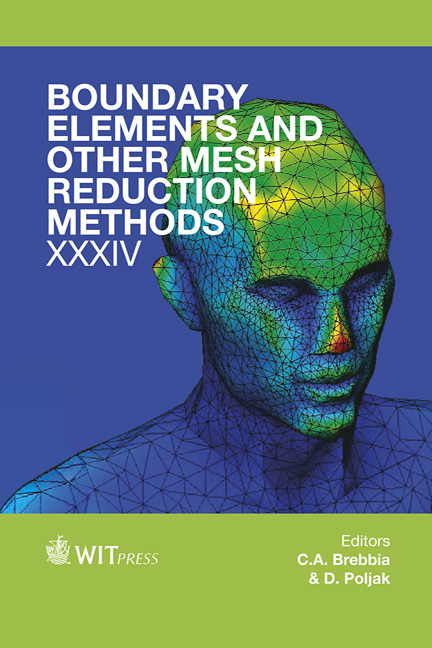Local Regular Dual Reciprocity Method For 2D Convection-diffusion Equation
Price
Free (open access)
Transaction
Volume
53
Pages
11
Page Range
27 - 37
Published
2012
Size
300 kb
Paper DOI
10.2495/BE120031
Copyright
WIT Press
Author(s)
N. Caruso1,2, M. Portapila1,2 & H. Power3
Abstract
In this paper a new technique considering the dual reciprocity method (DRM) with only internal collocation points is considered along with local radial basis function interpolation. This approach gives rise to regular integral equations. Numerical results for the convection-diffusion equation are presented for different Peclet numbers. Comparisons with other numerical techniques are shown in order to illustrate the good solutions obtained by this method. Keywords: DRM, RBF, regular integral equations. 1 Introduction The basis of boundary element method (BEM) is to transform the original partial differential equation (PDE), into an equivalent integral equation. Several methods have been developed to take domain integrals to the boundary in order to eliminate the need for internal cells (boundary only BEM formulations). One of the most popular to date is the dual reciprocity method (DRM) introduced by Nardini and Brebbia [1], it converts the domain integrals into equivalent boundary integrals. Popov and Power [2] found that the DRM approach can be substantially improved by using domain decomposition to improve the accuracy of the DRM approach, this idea was inspired by the work of Kansa and Carlson [3] on the radial basis function (RBF) data approximations. Florez e t a l . [ 4] improved the performance of the DRM in the BEM numerical solution of the Navier- Stokes equations through a multidomain decomposition technique. Following those results, the performance the DRM-MD was investigated [5], implementing quadratic shape functions of the boundary elements for both the approximation of
Keywords
DRM, RBF, regular integral equations.





